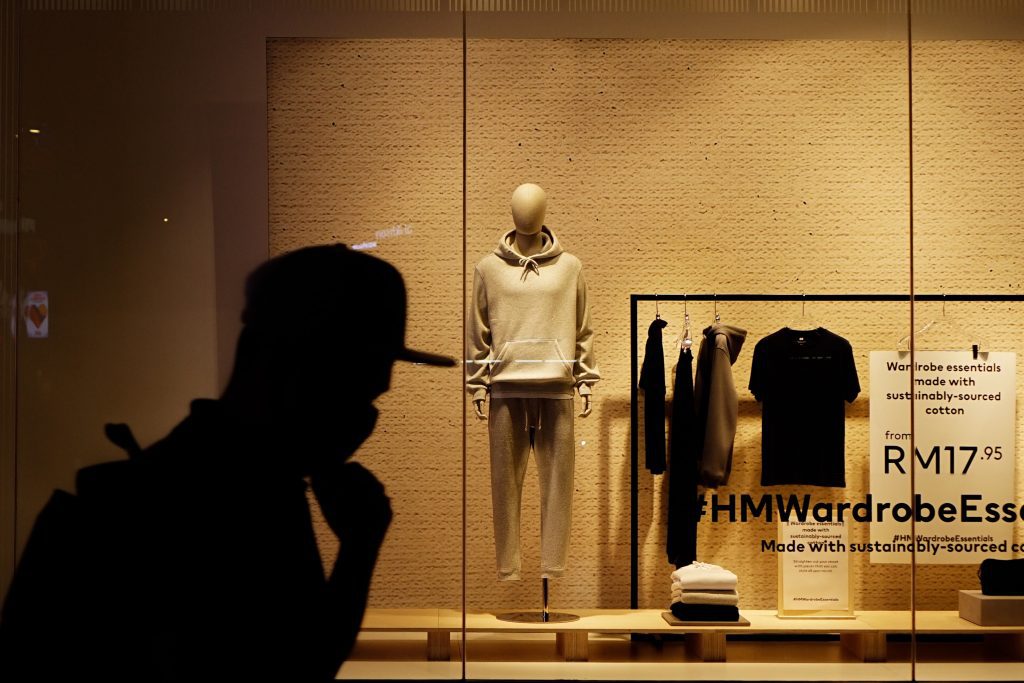Fashion has a notorious environmental footprint, accounting for as much as 10 percent of global carbon emissions, a figure that is exacerbated by a fast fashion business model, which encourages the frequent purchase of low-priced and non-durable items. At the same time, almost 20 percent of online purchases, including apparel, are subsequently returned, at least some of which goes to landfills. In 2020, an estimated 2.6 million tons of returns were disposed of this way in the U.S., alone, per all-in-one returns platform Optoro. The issue has become so notorious that e-commerce retailer Boohoo recently followed a number of high street brands in starting to charge for returns in order to discourage them.
What is driving such a high rate of returns and why are many returned items not being re-sold? The pandemic fundamentally changed the way consumers shop, with the temporary closure of physical stores representing a boon for online retailers. However, online retail’s surging market share has origins in long-standing fast fashion marketing practices. With a premium placed on newness, low prices, and both free delivery and returns, customers are encouraged to purchase multiple options with the knowledge they can return items freely – and easily.
Buy-now-pay-later schemes, such as Klarna, which allow customers to order without upfront payment have accelerated online consumption even further. Research indicates that by offering such “payment solutions,” retailers will typically see a 68 percent increase in average order value. And still yet, industry research suggests that cart abandonment rates decrease by nearly 40 percent after the introduction of such payment solutions.
Fast fashion is synonymous with returns
Despite the appeal of low prices and discounts, cheaply-manufactured fashion items can typically exhibit quality and fit issues, thereby, prompting outsized returns. Impulsive spending, driven by discounts, also often leads to buyers’ remorse, again increasing the incidence of return. It is against this background that clothing orders see an estimated 32 percent rate of returns, which dwarfs that of other e-commerce sectors, such as consumer electronics, for which the returns rate is just 7 percent.
For e-commerce retailers, processing returns is fraught with uncertainty and complexity. Which items will be returned, and in what state, is unknown. Often, once used, little can be done to make items desirable for re-purchase. This is particularly true in the case of “wardrobing,” where a purchased item is worn once before being returned. Retailers not only encounter financial loss through reprocessing, they risk a spoiled reputation if worn or damaged items are recirculated to consumers.
ASOS previously announced that they would clamp down on “wardrobing” by closing the accounts of fraudulent returners. However, the threat of a bad review often leaves the retailer with few options but to refund. Many retailers, instead, sell these returns on to liquidators, which turn the obsolete goods into fast cash. A cursory look on eBay reveals dozens of pallets of “Amazon customer returns” available to the highest bidder.
The challenges facing retailers
Both the cost of processing returns, and their increased volume, represent a challenge for retailers. The substantial reprocessing costs involved in product returns means that for fast fashion items, they often exceed the potential resale revenue. The remuneration of comparatively high-cost domestic workers within labor-intensive returns reprocessing is widely considered responsible for this. Getting rid of returns, therefore, often constitutes the most cost-effective decision. An ITV investigation into Amazon’s Dunfermline warehouse accused the online retail titan of disposing of tens of thousands of returned consumer goods each week. Amazon disputed such findings, stating that none of the items were sent to landfills, and instead, were donated, recycled or incinerated for energy recovery.
The fashion industry collectively produces over 92 million tons of textile waste per year, according to a 2020 report authored by Kirsi Niinimäki, Greg Peters, Helena Dahlbo, Patsy Perry, Timo Rissanen, and Alison Gwilt and published by Nature Reviews Earth & Environment. In the U.S., alone, Eco-Age claims that clothing returns create more annual carbon dioxide emissions than 3 million cars. (Carbon dioxide is initially emitted through the collection of returns, before increasing as returns are either incinerated or deposited in landfills. Due to the prevalence of synthetic fibers in many fashion items, returns can take up to 100 years to fully decompose, emitting carbon dioxide and methane in the process, as well as leaching harmful substances into the surrounding soil.)
How are retailers tackling the returns issue?
While the environmental implications of product returns are clear, fashion retailers also have a financial incentive to tackle the issue of costly returns management. Due to the complexities surrounding reprocessing, fashion retailers are increasingly outsourcing the responsibility to specialist firms, such as ReBound Returns, which work with retailers to make the returns process more sustainable. For instance, ReBound encourage retailers to donate returned consumer goods to charity through their ReBound Regift facility, an effort that has so far facilitated charitable donations worth £190 million ($229 million).
Elsewhere in the market, e-commerce giant ASOS claims that 97 percent of returns are now resold, and no items are sent to landfills. And as recent move by Boohoo and Zara to charge for returns shows, several online retailers have attempted to pass the cost of returns onto customers. While the reasoning for this is primarily financial, the impact of similar policies in improving customers’ environmental consciousness is well-known. Since 2015, plastic bag usage has dropped 97 percent in England’s main supermarkets, following the introduction of a small charge.
Despite calls for greater sustainability within the fashion industry, fast fashion continues to flourish. Should marketing practices that encourage waste and fuel emissions persist, the fashion industry will retain its unwanted reputation as a significant contributor to climate change. As such, retailers are encouraged to reconsider the unintended effects of the leniency afforded by their returns policies, balancing the need for customer retention with environmental consciousness.
Patsy Perry is a Reader in Fashion Marketing at Manchester Metropolitan University. (This article was initially published by The Conversation.)











